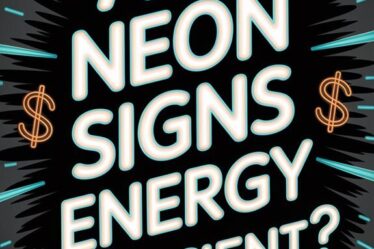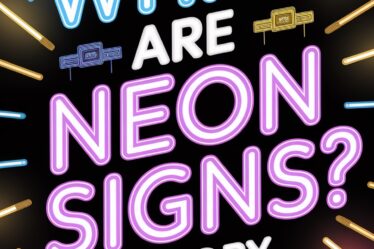
Neon signs create vibrant displays through electrified gas inside glass tubes, producing vivid colors and lighting effects. When professionals handle installation, these signs operate safely and typically last 8-12 years with basic upkeep. Simple maintenance like dusting and checking connections keeps them running smoothly. At just 3-5 watts per foot, they provide an energy-efficient lighting solution for businesses and decorative purposes.
What Are Neon Sign Boards?
Neon sign boards are illuminated displays that use glass tubes filled with neon or other noble gases to create bright, colorful lighting. When electricity flows through these tubes, the gas particles become energized, creating a vibrant glow that attracts attention.
These signs showcase an array of colors, from classic red to electric blue and warm yellow. Skilled craftsmen bend the tubes into artistic designs, forming letters, shapes, and images that illuminate the darkness.
Whether for business advertising or decorative purposes, neon signs combine practical function with striking visual impact.
How Neon Signs Work?
Neon signs works on a simple scientific process called ionization to create their distinctive glow. When electricity moves through gas-filled glass tubes, it energizes the atoms, producing visible light.
Pure neon creates red-orange illumination, while argon generates blue light. Manufacturers blend these gases with phosphor coatings inside tubes to produce many different colors.
The electrical current’s strength controls how brightly the sign glows.
Are Neon Signs Safe?
Are neon signs safe? This question naturally comes to mind when considering the electricity powering these luminous displays.
When properly installed by licensed professionals, neon signs are remarkably safe.
Modern neon signs incorporate protective casings, proper grounding systems, and UL-listed transformers to minimize electrical risks.
Today’s neon signs meet strict safety standards through quality insulation and secure mounting brackets that prevent contact.
While vintage signs can have exposed wires or broken tubes, new models feature protective circuitry and emergency shutoffs.
Regular inspections and professional installation help ensure your neon sign remains safe.
Lifespan & Maintenance of Neon Signs
A well-maintained neon sign can illuminate your space for 8-12 years before requiring significant repairs.
Maintain cleanliness by gently dusting with a soft cloth every few months, avoiding harsh chemicals or abrasive materials.
Monitor your sign for loose connections, flickering, and dimming lights, and seek professional help when problems arise.
Indoor signs outlast outdoor installations due to protection from weather elements.
Ensure proper electrical connections and minimize frequent on/off cycles to prevent transformer wear.
Energy Efficiency & Cost Analysis
Modern neon signs consume surprisingly little electricity, typically drawing between 3-5 watts per foot of tubing. Their energy usage compares favorably to traditional lighting options.
A standard 6-foot neon sign uses about the same power as a 30-watt light bulb.
Operating a medium-sized neon sign 24/7 costs roughly $3-8 per month in electricity.
While LED alternatives consume less power, neon signs’ longevity and reduced replacement needs make them cost-effective.
Their distinctive glow and artistic appeal often justify the minimal operating costs.
Conclusion
Armed with knowledge about neon signs, you can confidently choose the right option for your business or home.
These displays run efficiently, remain safe with proper installation, and typically last 8-15 years when maintained well.
Both classic neon and LED alternatives deliver that iconic bright glow that’s drawn eyes since the early 1900s.



